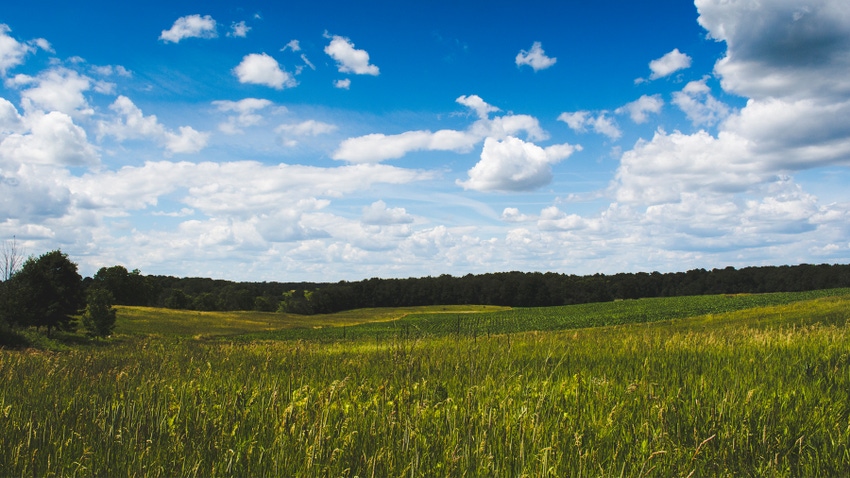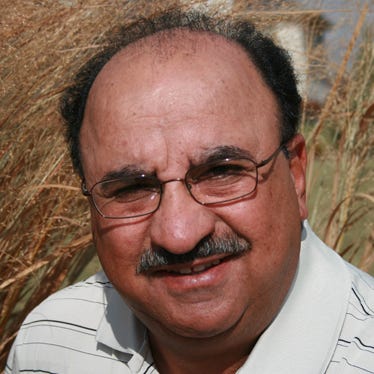
The superiority of native prairie vegetation in building a resilient ecosystem is well-established within landscapes, where soil biodiversity, soil functionality and wildlife habitat are at their optimum. Modern agriculture, in the U.S. Midwest and elsewhere, has changed landscapes’ cover from biodiverse prairie ecosystems to row crops dominated by corn, soybean, wheat and others in a rotation sequence.
This change in land use has, consequently, degraded the soil's inherit ability to cycle nutrients due to the introduction of intensified input and managements, such as tillage and chemicals that have led to a decline in soil health, increased soil erosion and a decline in soil biodiversity. The great loss of native grasslands worldwide and in North America has led to major declines in grassland wildlife and its habitat.
Losing prairie
Tallgrass prairie had occupied more than 168 millionacres of the North American Great Plains before the European settlement, which has declined by 96% as of now. Most of the tallgrass prairie has been converted to cropland, contributing to the decline of 74% of grassland bird species and the threat of extinction for 12% of Palearctic reptile species. In addition to wildlife loss, the decline of soil biodiversity and many ecosystem services over the past 150 years have been documented in many studies.
However, the incorporation of prairie grasses within the agriculture landscape offers environmental and economic benefits realized in a short period of time by reducing soil and nutrient losses by as much as 95%, as documented by many studies. These findings have led to an increase in the amount of prairie vegetation in the landscape providing an ecological uplift without competing with farm crop production operations and managements.
The placement of native prairie vegetation can fit the landscape orientation with minimum encroachment on field management and operations as either contour buffer strips or edge-of-field filter strip as demonstrated by the STRIP Project at Iowa State University.
This effort led to the adoption of such practices in the 2018 Farm Bill under the Conservation Reserve Program, called CP-43. This is a significant step in transforming the agriculture landscape to mitigate climate change effects by:
enhancing atmospheric carbon dioxide removal
lowering greenhouse gas emissions
reducing damage to soil health
enhancing soil biodiversity
building back wildlife habitat lost over the past 150 years
The prairies’ efficient and quick response in mitigating downside effects of modern agriculture on critical ecological services is documented in many studies, along with the valuable role prairie systems play in restoring landscape health.
The short time for ecological restoration by the placement of prairie vegetation on working land has been documented through a reduction in soil sediment and nutrient export by over 95%, a threefold increase in soil microbial biomass over row crop soils, and an increase in soil carbon sequestration in a few years by four times over row crop soils.
These improvements in ecological functions of soil and potential contributions to increases in soil carbon sequestration, reductions in GHG emissions, and soil health physical and biological functions can be realized with minimum input and great economic and environmental benefits.
Power of prairie strip
The impacts of strategically placed prairie strips within the working land on sediment and nutrient runoff reduction and the effects on soil biophysical functions were significant. The prairie strip treatment placed at row crop sites planted in corn had 96.8% less sediment discharged than fields without prairie strips. Also, placement of prairie vegetation in row crop fields led to a decrease in discharge of a major constituent of the carbon pool called dissolved organic carbon, which is a small, yet important, part of a watershed’s carbon budget, because it is mobile and biologically active.
Agricultural conservation practices such as prairie vegetation strips will influence carbon cycling of an upland agroecosystem and could affect how much DOC enters streams in runoff, potentially affecting aquatic ecosystems downstream. The increase in size of prairie strips reduced DOC export out of the watershed significantly.
It is imperative to rethink the structure of working land to build a sustainable food production system that encompasses the principles of regenerative agriculture. A system that contributes to food security, yet is resilient to combat climate change, challenges and safeguards environmental quality and economic viability for the farming community.
To achieve such a system, certain changes need to be made through restructuring of farm policy by converting at least 25% of working land, especially in areas with a low potential economic return to be placed into a permanent conservation area, such as prairie vegetation, to enhance the ecological benefits lost since the conversion of prairie land into row crop production since the early 1800s.
The advancement in agriculture technology and the exponential increase in productivity per land unit makes such a targeted goal achievable without costing a significant reduction in productivity, and it can lead to a reduction in input costs by reducing associated environmental costs and enhancing soil health.
To maintain native habitat at levels higher than 25% is supported by science for native habitat restoration in particular landscapes. The New Global Framework for Managing Nature Through 2030, conceived in 2020, includes a minimum habitat restoration target for working landscapes that contribute to, but does not compete with, initiatives for expanding protected areas.
Read more about:
Prairie StripsAbout the Author(s)
You May Also Like






